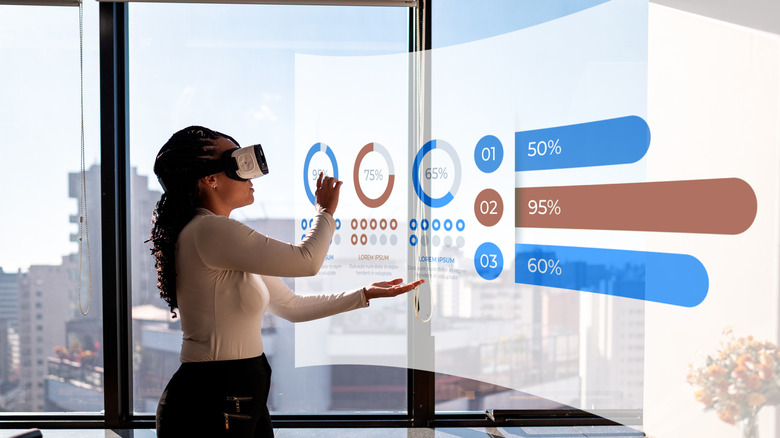Augmented Reality Explained: How It Works
Augmented Reality (AR), unlike virtual reality (VR), integrates digital information within a user's environment. It provides an interactive version of the real world, offering functionality from entertainment to education, with many different industries using AR devices. Ever since Apple released its Vision Plus headset on February 2, 2024 — despite some big complaints — AR has become an even bigger topic of discussion.
A computer scientist at Harvard named Ivan Sutherland developed the first augmented reality technology in 1968, but the tech didn't find its first commercial application until 2008. A German ad agency created an ad for a Mini in a physical magazine. When readers held up the ad to a computer's camera, the BMW appeared on their monitor. The ad served as a physical marker that prompted computers to project a virtual version of the car, allowing users to look at the car from different angles.
Augmented reality largely found mainstream popularity in 2016 when Niantic launched the "Pokémon Go" app, blending real-world surroundings with the mythical creatures of the game. Ever since then, it has been easy to find apps utilizing augmented reality on smartphones. Headsets also allow AR enthusiasts to take the technology to the next level, but how does this technology work?
The different types of augmented reality
AR integrates a combination of digital and physical environments, interactions made in real time, and 3-D identification of both virtual and real objects. Using that data, it can display a 3-D object or interface superimposed on top of the real world. To accomplish this, several hardware components are required, such as a processor, display, and sensors. In some cases, an input device like a mouse and keyboard is necessary if users wish to interact with the interface. Most importantly, the device needs a camera, such as the one found on a smartphone, tablet, glasses, or headset.
There are two types of AR: The first kind is known as marker-based AR, which uses image recognition that lets the software identify objects pre-programmed into a device or application. For example, when users scan a QR code, and information about an object or location pops up. The QR code is a marker, hence "marker-based." Then, there's marker-less AR, and as the name implies, users don't need to scan a marker to receive an augmented experience.
Instead, marker-less AR utilizes information gathered by a device's geographic location, cameras, sensors like accelerometers or compasses, and even the time of day to generate virtual data. There are numerous sub-categories of marker-less AR, including location-based, superimposition-based, and projection-based AR. Some applications utilize a combination of all the subtypes to provide a more thorough experience. "Pokémon Go" is a form of marker-less AR.
Best use cases for AR technology
Thanks to augmented reality, users can play video games in a new, immersive way. However, the technology has many other far-reaching applications that can benefit multiple industries. Retail, for example, utilizes AR software to help consumers envision clothing and accessories on their bodies, eliminating the need to rely on their imagination. This not only improves the whole online shopping experience, but also helps cut down on costs and buyer's remorse.
Manufacturers can use augmented reality like Tony Stark, displaying and manipulating 3-D models of blueprints. They can turn those blueprints into a virtual prototype and reposition it to examine the product from all angles before it reaches the fabrication stage. And now, Apple has introduced spatial computing to the world with its Vision Plus headset. Spatial computing is more encompassing than augmented reality technology, but there's no mistake that it utilizes aspects of AR.
Educators can use augmented reality in the classroom for enrichment and provide an interactive experience. Students can obtain more context and additional information on a subject through AR technology. Something like the Vision Plus headset helps remote workers accomplish their daily tasks without hauling around a laptop and its accessories.
Granted, now they have to haul around a headset, but there is something to be said about carrying something around that you can use simultaneously. The technology is still evolving, but one day it might be a normal part of everyone's day, no different than working on a computer.


